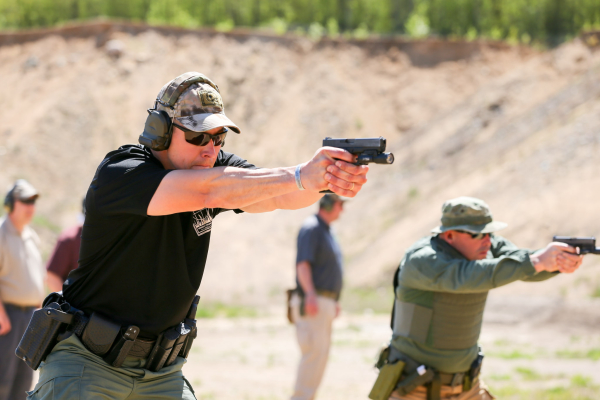Today’s feature is from Dave Spaulding
“What Should I Practice?” -- It’s one of the most common questions I receive.
There is no doubt ammo prices (and availability) affect one’s personal training and ability to keep skills sharp while paying the mortgage, car payment, buying groceries, clothing and all the other things necessary for daily life. Since blowing up ammo needlessly is silly, we need to shoot our limited ammo supply wisely...as well as preserve our valuable time.

I’m a firm believer in essential skills (what most call fundamentals), and while many shooters get bored practicing basics, these skills are necessary to prevail in a fight. Bruce Lee once said, “Advanced skills are the basics mastered,” and it is true. My research into armed conflict, along with my law enforcement experience, leads me to believe pistol fights are not overly complicated affairs. Barrel rolls and related acrobatics are seldom necessary; they are usually “go-to-guns” fast-and-furious with a bit of movement. Many USPSA matches are much more complicated. Practicing basics is the place to start.
Dry Fire
Fortunately, most essential skills are mastered without firing a shot. Dry fire is the best way to improve draw, reload, malfunction clearances (using dummy rounds), shooting around cover (with a mirror at the opposing side to see how much you expose of yourself), one-hand manipulation, unconventional shooting positions (kneeling, prone, on the side, “roll back”, etc.) and any other skill that doesn’t require actual repeated trigger manipulation. The purchase of a dry fire training aid (there are many, shop around) can give first shot feedback via a laser fitted into the barrel of your carry gun. In truth, the “package” of grip, trigger and recoil control are the only things that require live ammo expenditure to master.
Before beginning any dry fire training program, make double-, triple- and quadruple-sure that your gun is empty and that no live ammo is in the room with you. As a matter of fact, it is a great idea to make sure you are in the room alone and lock the door behind you, especially if you have small children. A capable dry fire back stop pad made from Kevlar or other ballistic material is a very good idea. An old body armor panel works well. That way, if you suffer a “brain fade,” the round will be captured harmlessly and a valuable lesson learned.
The Real Deal

Now that we’ve narrowed the skills needed for live fire practice, let’s look at when we do need live ammo. Trigger control is the most important skill required for accurate shooting and the most difficult to master. In a nutshell, the index finger on the shooting hand depresses the trigger straight to the rear, working independently of the rest of the hand, without interrupting muzzle-to-target alignment. Think about how many times a day you open and close your hand, using the thumb and fingers in concert -- and in opposition -- with one another. Then, you can get some idea of how complex this action really is. Every time you open and close your hand, you are undoing what is required of your index finger to shoot well, thousands of repetitions a day of a physical action versus occasional shooting practice. Taking this into consideration, is it hard to understand why shooters squeeze their whole hand when they shoot? I call it “milking the grip” as it reminds me of my feeble attempt to milk the teat on a cow in my past, squeeze and pull down. Do you squeeze the whole hand when you shoot? Most do, especially as they get resistance from a trigger action. The pinky finger can be a real detriment to accurate shooting.
Independent trigger manipulation requires intense concentration and needs to be mastered before all other skills. It must be practiced regularly, as it will diminish quickly. Dry fire is a great way to maintain this skill. The “Wall Drill” as taught to me by George Harris, formerly of the SIG Academy, has the shooter point their EMPTY pistol at a blank wall a few feet distant. Looking hard at the front sight or dot (there should be nothing else to look at) smoothly depress the trigger straight to the rear while watching to see what the sight does. If it moves off target, you moved your whole hand versus just the trigger. It’s a great drill that tells you a lot of about what your whole hand is doing.
More to follow next week ...
